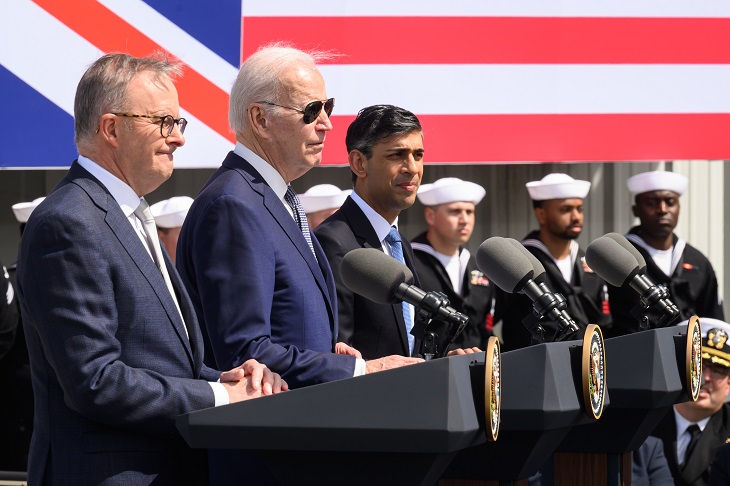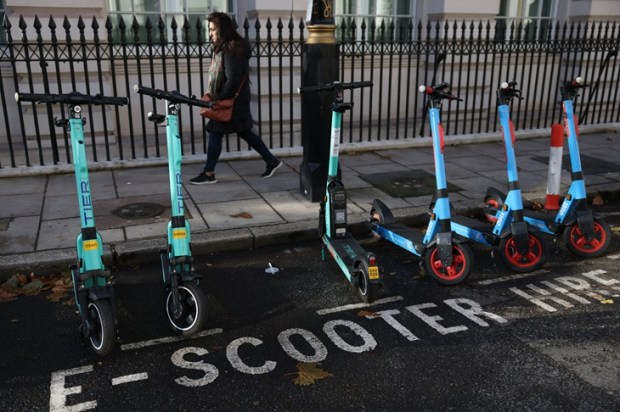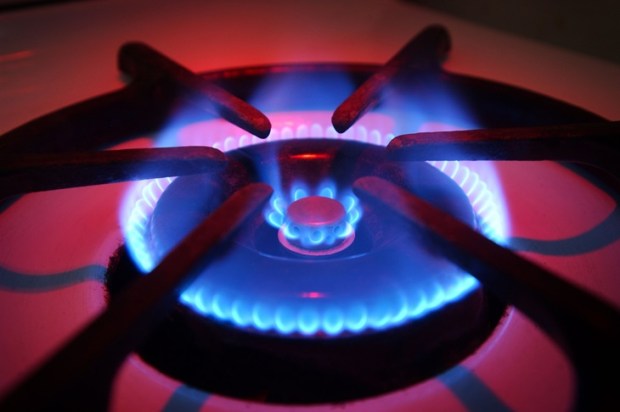Submarines, despite recent ill-informed comments from ex-Prime Minister Paul Keating, are currently a very expensive, ‘must have’, item in the news. After years of prevarication, the Australian government has signed up for the multi-billion purchase.
Surprisingly, submarines are not a modern invention. Early attempts at underwater craft were made in ancient times, primarily with military intentions. Peter the Great used a version in Russia in the 1700s. A single-man peddle-powered sub called Turtle was used by the Americans in the War of Independence. Subsequent versions in the 1800s were powered by compressed air, or electric batteries, with the first torpedoes, also developed at that time. The major technology advance came with the invention of the diesel engine, versions launched in the US and UK around 1900. Early submarines were often transported on ships, hence they were called boats; the term has stuck.
By the start of the first world war, all the major powers had submarine fleets, the Royal Navy had 74, Germany 20. Their role in war was primarily confined to sinking shipping. The first Australian sub casualty was AEI, disappearing off the coast of New Guinea in 1914. AE2 fared little better, and was scuttled in the Gallipoli campaign in 1915. These subs were tiny by modern standards, displacing 750 tonnes, length 55 metres, with a crew of 35 and a top speed of 10 knots. They had 4 torpedo tubes, but shipping attacks were often carried out on the surface, using deck guns. The German torpedoing of the passenger ship Lusitania in 1915, precipitated the US entry into the war.
By the second world war, technology had improved with development of radar, improved hull design meaning greater depth, snorkels to allow longer periods submerged, and self-guided torpedoes; an estimate 5,000 ships were sunk in this war. Subsequently, there have been few wars with combat losses. The Falklands War in 1982, resulted in the loss of 6 British ships to French Exocet missiles; the Argentinian ship, General Belgrano, was the first ship to be sunk by a nuclear submarine, the HMS Conqueror, in that war.
The development of nuclear power from atomic bomb research, led to the first nuclear powered submarine; Nautilus, was launched in 1954, soon followed by Russia and the UK. In the early years there were many mishaps with several Russian and US subs lost with all hands. Their initial role was in the protection of shipping but, with progress in rocket weaponry, came the threat from carrying Intercontinental Ballistic Missiles (ICBM) during the stand-off of the Cold War. Seven countries now have nuclear powered subs; US, Russia, UK, France, China, and recently India and North Korea.
There are now 3 distinct types. The original ‘attack’ subs use torpedoes as their main weapon, they are fast and highly manoeuvrable, they now also contain torpedo or vertical launched guided Cruise missiles. The larger, SSBN (submersible ship ballistic nuclear) subs carry intercontinental ballistic missiles (ICBM) for nuclear attack, or strategic defence. The third type, SSGN was developed from SSBN, for special forces operations.
The original Collins Class submarines were constructed in South Australia in the 1990s; they were fraught with technical and design teething troubles, limiting their effectiveness and time at sea. There were problems with propulsion, shape of the conning tower, propellers, periscope, and combat systems. With steadily improving capabilities, six vessels were built, of around 3,500 tons and 77 metres in length, 2 more were planned but cancelled. There have been ongoing maintenance and manning difficulties (the crew is 6 officers and 36 ratings), meaning there have rarely been more than 2 at sea at any one time.
When at sea, they have a limited range of 11,500 nautical miles (surfaced), 9,000 nm (snorkelling) and 400 nm submerged, before requiring diesel refuelling. They can stay submerged for up to 70 days with snorkelling to recharge the batteries, and can travel at 20 knots submerged. The problem is their ease of detection when snorkelling. They have an advantage when operating in shallow waters and can launch short-distance, anti-ship, harpoon missiles via torpedo tubes. These missiles, also launched from surface ships, are highly accurate and carried by around 30 navies. Although the subs have outdated technology, they can still do things other subs can’t do, and their stealth has sometimes taken American ships by surprise, when on exercise.
The original cost of the 6 subs was around $5 billion, maintenance around $500 million annually, with upgrade costs estimated at $10 billion; estimates are they now take up around 5 per cent of the defence budget, likely to increase to 10 per cent. They were due to be retired by 2020, but service has now been extended to the mid-2030s, when their replacements are (possibly) starting to arrive. An upgrade will include the ability to fire cruise missiles from their torpedo tubes, significantly increasing their lethality.
For purely ideological reasons, nuclear powered subs were ruled out in 2009, after years of prevarication from both sides of government, there is now a firm commitment. The bizarre 2019 Malcolm Turnbull option was to convert a tried and tested French designed Barracuda nuclear powered attack sub into a diesel version. It was intended to be delivered in the early 2030s, but was falling behind schedule when cancelled. Several billion dollars were wasted on attempting to reinvent old technology and a capability gap has developed. Nuclear was always the only viable option, the ex-PM still refuses to accept this.
The 2021 Aukus agreement means that, starting from around 2033, Australia will obtain 3 used and refurbished Virginia class attack submarines from the US, possibly 2 more; there is some doubt about the time-frame, with construction delays already forecast.
There has been remarkably little pushback from the public, maybe making the nuclear power debate less of a political challenge. Inevitably, the Green party were not happy, their Senator David Shoebridge announcing that the Port Kembla submarine base expansion would make the Illawarra region at risk of nuclear attack!
Approval of a nuclear waste facility in WA, for already accumulated Australian waste, may be another uncontroversial step forward; perhaps after securing nuclear power for defence security, we can look at nuclear power for energy security.
Currently, the UK has 4 Vanguard class SSBN’s, large at 16,000 tons and 150 meters in length, (tons and metric tonnes are approximately the same) with a submerged speed of 24kt, costing around 5 billion pounds each. There are also 5 Astute class attack subs, costing around 2 billion pounds each, around 7,500 tons and 100 metres in length, equipped with torpedo-tube launched torpedoes and cruise missiles, and a top speed of around 30 knots. These are smaller than the US equivalent, the more expensive Virginia class attack sub, at 11,000 tons and 140 metres in length, which also carries more weaponry, with vertically launched cruise missiles. Both can stay submerged for an indefinite period, limited only by food for the crew; the nuclear power source can last for 30 years without refuelling. Compared with the current Collins Class, these submarines have the ability to destroy ships, mine harbours, destroy other subs and attack distant land targets.
There are plans to subsequently design a new tri-nation sub, known at present as SSN-AUKUS. Over the 30 years the total cost of all these plans is substantial, including weaponry and new port facilities, a lifetime figure of between $268 and $368 billion has been suggested. Construction of 5 planned subs will commence in South Australia in the early 2040’; one will be built every 2-3 years, with the UK building their own; the submarine will be designed by UK and Australia, and will contain US combat systems. To fill the gap US and UK submarines will rotate through Perth, commencing around 2027, HMAS Stirling will require an upgrade of $8 billion to accommodate these visitors. These subs will add to the 300 estimated to be operating in the Pacific by 2030.
Crewing has been a problem with Collins, the Virginia class sub has a ship’s complement three times larger, at around 130. Notwithstanding political prevarication, some submarine crewmen (now also women) have already gained experience with overseas nuclear subs, and ongoing rotation will be necessary. Recruitment may be enhanced by the superior space of the larger subs, meaning crew sharing bunks on shift will be a problem of the past. There needs to be a major leap in nuclear technology skills, with universities introducing new courses to fit the agenda; past ship building in SA has not been without problems, and the building gap will no doubt expose deficiencies.
As new technology advances for submarines and their weapons, so will methods of detection. The obvious advantages of a nuclear sub are its speed, endurance, and stealth, but once discovered its mission is compromised. Current methods include enhanced sonar, with buoys dropped from planes or ships, and increasing satellite surveillance. While a major problem with diesel subs is the propeller noise and detection of snorkels, nuclear subs work on a jet propulsion system and are more difficult to detect.
The physics of sonar (emitting and receiving sound wave reflected back off an object) is used by animal species such as bats to fly safely at night, the same principle has also been developed as ultrasound for human body imaging. As sonar improves, the increasing use of autonomous vehicles and sensors will increase. Advances in satellite technology will also increase risk, with improved optical sensors and heat tracking of engines’ thermal signatures, this potential is still currently obscured by thermal layers of ocean, blocking signals.
Better understanding of quantum physics means these technologies will improve, as will the potential ability to disable a sub by ‘star-wars’ satellite lasers. The experimental use of submarine launched unmanned drones has now arrived; the US has a torpedo launched drone called Razorback, used for scouting; in future it may be retrievable, by wire. The problem of detecting submarine signals remains, as the technology improves. The Ukraine war has demonstrated how drones can change the above sea battlefield; what further detection advances will have occurred by the time the fleet build is complete in 2050? Even with these uncertainties, all major navies are continuing to build their own nuclear subs.
As its own military undergoes massive expansion, China is still likely to accuse Aukus of provoking an arms race. We can expect more economic blackmail from geopolitical rivals, we can also expect more misplaced invective from relevance-deprived Paul Keating, now added to you by his old far-left colleagues, as they live in the past and deny the China’s expansionist aims.
Got something to add? Join the discussion and comment below.
Get 10 issues for just $10
Subscribe to The Spectator Australia today for the next 10 magazine issues, plus full online access, for just $10.


























Comments
Don't miss out
Join the conversation with other Spectator Australia readers. Subscribe to leave a comment.
SUBSCRIBEAlready a subscriber? Log in